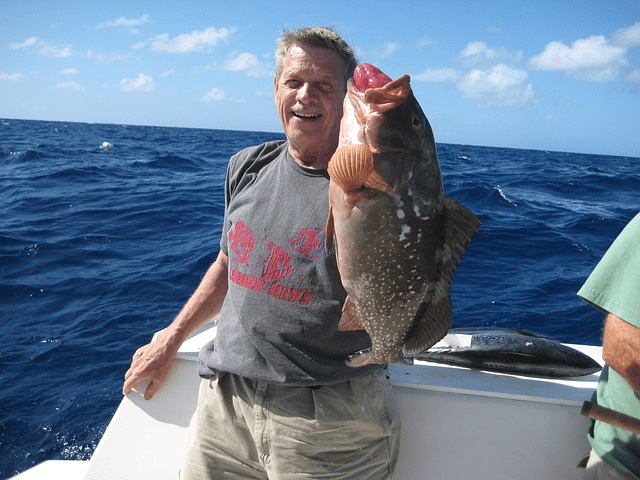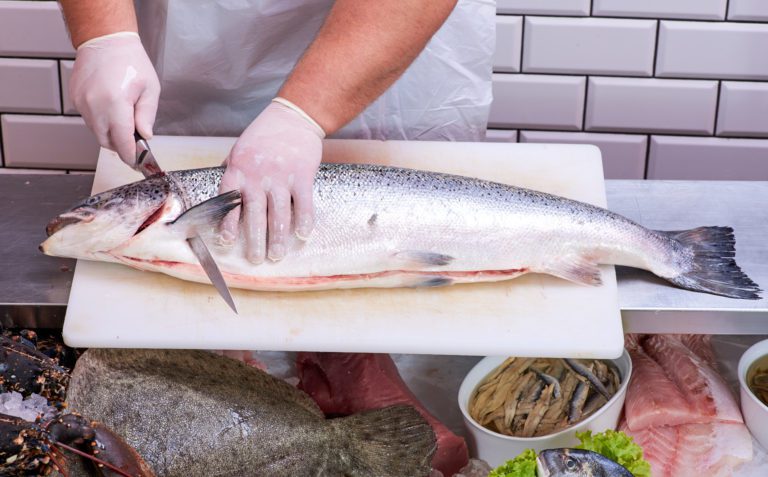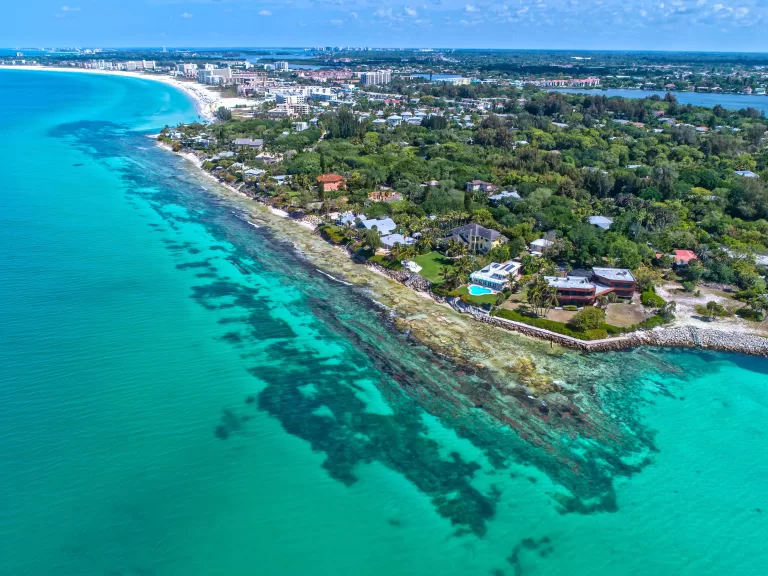False Albacore Fishing in Sarasota
Sarasota’s coastal water is a treasure trove teeming with a variety of fish species for all anglers, including some unique gems.
While you’ll have more luck finding species like Snook, Flounder, Bluefish, Mackerel, and Redfish in Sarasota, you can also get a lucky strike and land unique species like False Albacore.
This fish is known for its feisty nature, incredible speed, and tenacious fighting spirit, making it one of the most alluring targets for anglers seeking an exciting challenge.
If you’re interested in finding out more information about False Albacore fishing in Sarasota, this guide will have you covered with everything you need to know. Let’s dive right in!
A Brief Overview of False Albacore Fish

False albacore is a unique species of tuna fish that belongs to the family Scombridae. They’re pelagic species, meaning you can find them across open waters, including the Atlantic Ocean as well as the Mediterranean and Black Seas.
In fact, you can catch these fish all across the United States Atlantic coasts, extending from New England to Florida and the Gulf of Mexico. However, they also further extend to Canada in the North and Brazil in the South.
In addition to False Albacore, the fish also goes by a wide range of names, including Little Tunny, Bonito (different from Blue Bonito), or even Fat Albert. The scientific name of these fish is Euthynnus alletteratus.
A typical False Albacore is around 18 to 33 inches in length and weighs anywhere between 2 to 15 pounds.
The reason why these fish are known as False Albacore is that they resemble Albacore fish, although they’re more closely related to Mackerels than Albacore Tunas.
The primary identifying feature of these fish is the worm-like markings on their backs along with the dark spots between their pectoral and ventral fins. They also have a relatively small body along with a streamlined, robust body and strong fins to support powerful swimming.
False albacore are prized by anglers for their strength and fighting spirit. They may be smaller than true tuna species, but they are pound-for-pound some of the most powerful fish you can catch on a fly rod.
Reasons to Consider Fishing for False Albacore
Now that you know a bit more about the species, you might be wondering whether False Albacore is a worthy fish. In this section, you’ll find some of the main reasons to consider targeting these fish.
Offers a Thrilling Fight with Fast-Paced Action
As previously established, these fish have an energetic temperament and streamlined body built for powerful runs and battles. The strong swimmers will put up a serious fight on light tackle, making them quite an exhilarating challenge and prized catch for sports anglers.
In fact, these fish are so challenging that some anglers may develop a special obsession for fishing them, which is often called “Albie Fever”.
In fact, the arrival of false albacore in the region is often a highly anticipated seasonal event, as the fish usually head inshore in the fall, following baitfish. (False Albacore isn’t a migratory species like some Tuna fish, but its location preferences change depending on the climate.)
As the fish start appearing near the shore, you’ll often find many anglers focusing almost exclusively on catching them.
Suitable for Various Fishing Techniques
False Albacore typically prefers feeding near the surface of the water. Combined with its relative size and aggressive nature, this makes it a perfect target for adventurous anglers interested in practicing fly fishing techniques and tactics.
No Special Regulation Worries in Sarasota
According to the Florida Fish and Wildlife Conservation Commission, False Albacore (Bonito) is considered an unregulated species. This means you don’t have to worry about any specific guidelines or bag limits if you catch one.
That being said, all general fishing regulations and rules in Florida still apply when you’re fishing for False Albacore. You still need to carry a saltwater fishing license, as per the commission’s guidelines.
Is Little Tunny Edible?
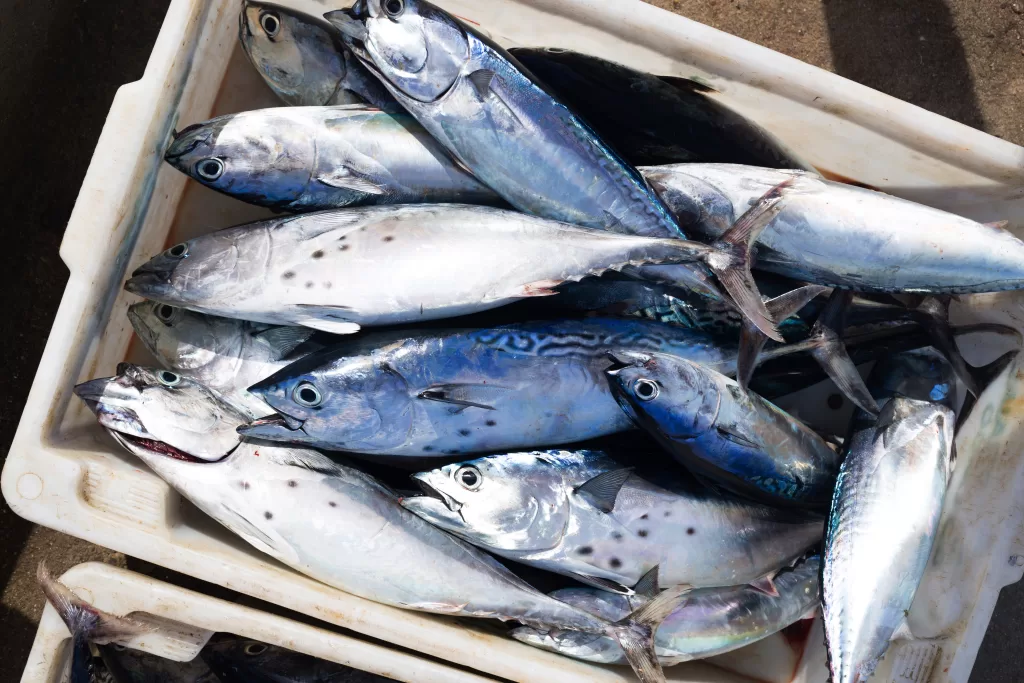
Technically speaking, False Albacore is edible and safe to eat, so you don’t have to worry about any poisonous parts of the fish.
That being said, the fish is more popular for the challenge it presents to anglers than its culinary qualities.
For starters, the fish has a relatively high blood content and rough texture, so preparing the fish can be incredibly messy.
Additionally, even if you go through the trouble of properly bleeding the fish, its flesh still has a strong, fishy flavor that most people find unappetizing. A few people may accept it smoked or grilled, but it still requires a lot of effort and seasoning to be palatable.
As such, false albacore is sought after as a sport fish rather than a game fish, and is often released after being caught by anglers.
Sarasota’s False Albacore Hotspots
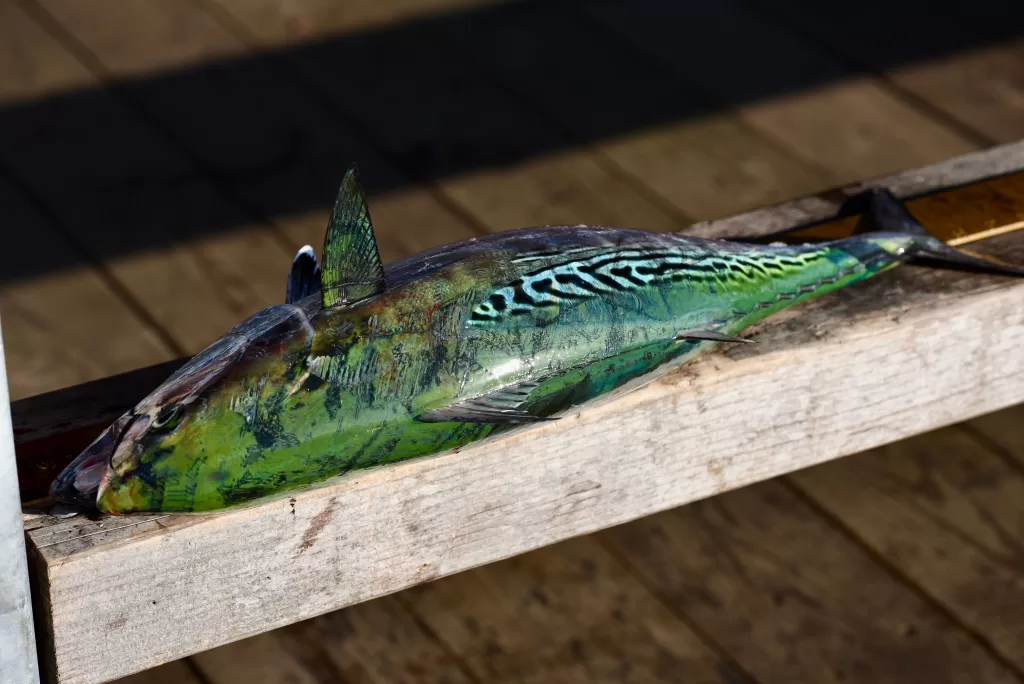
While False Albacore can be found throughout Sarasota’s nearshore waters, some parts are typically more productive when it comes to these highly energetic fish. In this section, we’ll take a quick look at some of them.
Nearshore Reefs
Sarasota County’s artificial gulf reef and natural rock formation attract a lot of baitfish while foraging, which in turn brings in plenty of False Albacore.
Luckily, Albies will typically swim near the surface of the water when they’re striking baitfish, which makes it easy to spot them with a quick scouting of the area.
Sarasota Bay
Sarasota Bay is generally one of the richest areas when it comes to aquatic wildlife near the shores of Sarasota.
You can find Little Tunnies hanging out there all year round, but your best chances of catching one would be around the spring and fall months.
Lido Key
Taking charter boats and sailing deep into the Lido Key waters can give you access to plenty of False Albacore.
This is especially true during the fall season, as this is the time of the year when Little Tunnies are most active near the surface.
Best Conditions to Catch False Albacore in Sarasota
Although False Albacore is available all year round, they can be quite elusive and skittish. That’s why your best chances of catching one is when there’s an abundance of them.
Luckily, these opportunistic feeders have specific patterns and preferences that allow you to maximize your chance of catching them.
For instance, the prime time for False Albacore fishing in Sarasota is during the Fall to late Spring, typically from October through April.
This is when they swim near the shore to catch their preferred prey, as water temperatures near the surface are in the mid 70s to low 80s.
It’s usually best to cast for an Albie when the gulf is calm and the water is clear. When the water is choppy, Albies tend to avoid swimming near the surface, which makes it nearly impossible to take your bait.
Additionally, in clear water, you’ll have a much better chance of locating the ideal spots to cast, which increases your chances of a strike.
You also need to consider wind speed while fishing, especially if you prefer trolling techniques. Faster wind can make it difficult to control your lure and little to no wind may not create enough draft to entice the fish to strike.
Essential Gear to Fish for False Albacore in Sarasota
False Albacore fishing demands a balance between power and finesse. After figuring out the best spots to catch them in Sarasota, here’s a quick look at your gear and what you need to bring in order to land these feisty fighters.
Rods and Reels
False Albacore are notorious fighters for their size, so they require a rod that can handle their acrobatic turns and powerful runs. As a general rule, a lightweight, medium-light action rod would be a decent choice for these fish, typically between 7 to 8 feet long.
This size and action will offer optimal casting while providing a decent balance between durability and flexibility. This is essential to playing the fish and absorbing headshakes during fights.
As for the reel, you can go with a baitcasting reel. However, spinning reels remain the best option if you’re looking for the best results and performance for your first run.
This is because baitcasting setups will offer decent control for an experienced angler but they may require some experience to handle. On the other hand, spinning reels are remarkably easy to use, especially while trying to catch a False Albacore for the first time.
The choice of reel will also vary depending on the specific rod you choose. However, to handle initial runs and Albie acrobatics, you should pair your rod with a 3000 to 4000 series reel with a smooth drag system
Line
Although monofilament lines are more forgiving when it comes to stretch on a light tackle, braided lines are far superior when it comes to Little Tunnies.
This is because catching them relies heavily on sensitivity, strength, and cast distance, which are all aspects that braided lines are better at.
Fast reaction is essential with False Albacore because they’re quite skittish. So, with better sensitivity, you’ll be able to feel every nibble and head shake underwater.
Braided lines are also more durable and can handle the tugging force of the fish while fighting. The only downside here is that they’re a bit thicker and easier to detect in clear Sarasota waters, which can spook the leader-shy False Albacores away.
To overcome this problem, simply use a braided line with a fluorocarbon leader. For Albies, a 10 to 15-pound test line is a good starting point, but you can go up to 20 to 30 pounds if necessary.
Lures and Baits
False Albacores are opportunistic feeders, so you’ll have more luck getting a strike if you use a lure that mimics their preferred prey, especially minnows.
Jigs with soft plastic bodies like Bass Assassin Sea Shad are excellent choices, especially ones in baitfish patterns and light colors like white and silver. Make sure that your jigs are relatively small at around 1/4 to 1/2 ounces.
Alternatively, if you prefer jerk baits, consider going for the Rapala Glass Ghost X-Raps. Other similar options would also entice the fish quite nicely.
For fly fishing enthusiasts, a 9 weight outfit would be ideal, whether you opt for a floating or sink-tip line. The most important part is to make sure they imitate baitfish nicely. White Clouser Minnows would be perfect for this role.
Additional Tips to Keep in Mind While Fishing for False Albacores
In addition to picking the right time, place, and gear, there are some unique tips and tricks that can massively improve your chances of landing False Albacores in Sarasota. Here’s a quick look at them:
- Keep Up with the Bird: Albies aren’t the only species foraging for baitfish near the shore. Keep an eye out for bird activity near the water surface, as they’re typically a strong indicator of potential Albie feeding activity below the surface.
- Invest in Polarized Glasses: These glasses can help you see through the surface’s glare, making it easier to spot the lurking Albies below.
- Consider Chumming: Introducing frozen chum or live bait fish into the water surface can attract entire schools of False Albacore to the area. A good example here would be some live sardines.
- You May Need a Change of Tactics: False Albacore can be quite unpredictable. If you’re not getting bites with a specific technique, you may want to switch up your tactics. This doesn’t only include changing your fishing technique, but also your lure size, color, retrieval pattern, etc.
- Expect Other Species to Strike Often: One of the tricky aspects of targeting False Albacore is that their baits aren’t exclusive to them. In other words, it’s fairly typical for anglers to reel in a variety of species while going for Albies, especially Mackerels, so you have to be a bit patient.
Wrapping Up
False Albacore fishing in Sarasota offers a unique and exciting challenge for anglers who enjoy fast-paced fighting species.
With this handy guide, you should be able to pick the ideal gear, time, and location to catch Albies in Sarasota.
Although the reward is well worth the effort, you should note that it may take you some time before you catch your first False Albacore, so you have to stay patient and adapt to different situations and techniques.



